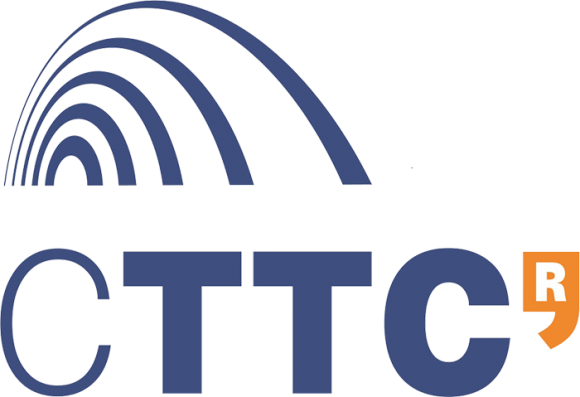Sunday, April 15 2018
Sunday, April 15, 09:00 - 10:30
WS1-I: Part I
Room: 121
Chair: Mehmet Yunus Dönmez (NETAS Telekomunikasyon A. S., Turkey)
- QoS and Resilience with the Cognitive Packet Network
Keynote Speech by Erol Gelenbe,
Abstract: The Cognitive Packet Network (CPN) is a bio-inspired packet network routing method (US Patent US6804201) which is adaptive, distributed and robust, and which has been implemented and experimentally tested. It also offers an effective resilience to worm and denial of service attacks. We will describe CPN and detail its reinforcement learning based quality of service routing approach based on measurements, using a Random Neural Network as the adaptive critic and decision engine. We will outline the motivation for this technique, and detail its principles and implementation. Experiments on a large laboratory test-bed and for intercontinental routing will be presented to illustrate the method. Extensions of CPN to energy-aware routing will also be discussed.
Biography: Erol Gelenbe was born in Turkey and received his PhD in the USA. During 1973-93, he was a Research Director at INRIA where he founded the performance modelling and evaluation groups in France. He also influenced the creation of research groups throughout Europe, and held professorships at the Universities of Liege (Belgium), Paris-Sud (Orsay) and Paris V. He has invented new mathematical models, such as the Random Neural Network and G-Network, and contributed to practical developments such as the SYCOMORE Voice-packet switch, the XANTHOS fibre-optics local area network, the QNAP and FLEXSIM simulation/modelling packages, the C2Agents Decision Tool and the CPN machine learning based packet routing algorithm. He has held chaired professorships at New Jersey Institute of Technology, Duke University, University of Central Florida, and is currently the “Dennis Gabor Professor” at Imperial College. He graduated over 74 PhDs, including 17 women, and 47 of his former PhD students work in Europe. Elected Fellow of ACM and IEEE, his awards include Chevalier de la Legion d’honneur, Officier du Merite, Commendatore al Merito (IT), Grand Prix France Telecom (French Academy of Sciences), ACM SIGMETRICS Life-Time Achievement Award, Denis Gabor Award (Hungarian Academy of Sciences), Oliver Lodge Medal (IET, UK), and three “doctorates honoris causa”. He was elected Fellow of the National Academy of Technologies of France, the Royal Academy of Sciences, Arts and Letters of Belgium, and the Science Academies of Hungary, Poland and Turkey.
- Advancements of QoE Assessment and Optimization in Mobile Networks in the Machine Era
Daniela Laselva (Nokia Bell Labs, Denmark); Troels E. Kolding (Nokia, Denmark); Massimiliano Mattina (Nokia, Italy); Hui Ji and Lily Liu (Nokia, Singapore); Arne Weber (Nokia, Germany)
Despite QoE evaluation methodologies in mobile networks are well-known and a largely investigated topic for human communication services, such as voice and video applications, several challenges remain yet unresolved. Primary the lack of industry-agreed definitions of the End-to-End performance indicators represents a major issue. In that picture, 5G technologies are anticipated to introduce a wide variety of new use cases and diverse services, and with that further challenges to QoE assessment. Particularly, machine communication services comprise performance inter-dependencies across machines (i.e. systemic effects), which have yet to be fully understood and modelled. Thus, this paper seeks to present the foreseen evolution of the QoE evaluation and optimization methodologies in mobile networks suitable for 5G to accommodate those challenges. Building on today's best practises, we describe a flexible QoE service model framework that relies on Key Quality Indicators (KQIs) allowing to estimate the objective QoE of specific services, while reflecting the drivers for network optimization and accounting for the Mobile Network Operator's strategy and the actual network design. We validate the proposed framework in a live mobile network of a Tier-1 LTE operator, proving the capability to well define the performance degradation phases, therefore making service quality management more effective. Being technology agnostic, we conclude on the model applicability to 5G and outline few potential adjustments.
COFFEE BREAK
Sunday, April 15, 10:45 - 12:15
WS1-II: Part II
Room: 121
Chair: Ertan Onur (Middle East Technical University, Turkey)
- Siren: A Platform for deploying Virtual Network Services in the Cloud to Fog Continuum
Lyndon Fawcett, Matthew Broadbent and Nicholas Race (Lancaster University, United Kingdom (Great Britain))
The demand on network infrastructures is changing. The increasing number of connected devices, along with growing demand, are creating an unsustainable future for the Internet. The recently introduced concept of Fog computing predicts a future Internet where general compute power is ubiquitous, extending the Cloud right the way to the network edge. In turn, this acts as a catalyst for Network Functions Virtualisation (NFV), increasing the potential infrastructure locations for deploying new services, specifically ones that can cater to the demands of the changing Internet. However, current realisations of NFV typically host network functions in homogeneous, centralised servers in Cloud infrastructures. This is in contrast to the Fog where environments are both distributed and heterogeneous, thus current management and orchestration platforms suffer from suboptimal service deployment. With the use of a multiple use cases, and a novel auctioning orchestration method, this paper presents Siren, which is an orchestrator for network functions in the Cloud to Fog continuum.
- An Efficient Module Deployment Algorithm in Edge Computing
Jang-Ping Sheu, Yi-Cian Pu, Yeh-Cheng Chang and Jagadeesha Rb (National Tsing Hua University, Taiwan)
Edge computing refers to data storage and processing at the edge of a network instead of cloud data centers. In edge com-puting, user data can be preprocessed to reduce the network traffic and load of the cloud system. Module deployment scheme is vital in edge computing since it has a significant effect on the performance and the resource utilization of the edge computing system. Our objective is to maximize satisfied user requests under the constraints of limited communication band-width and storage capacity of devices where the modules are deployed. Since the optimization problem is NP-hard, we pro-pose a heuristic algorithm based on relaxation and rounding techniques to solve this problem. The simulation results show that our algorithm satisfies more user requests than previous work.
- The Path Towards Resource Elasticity for 5G Network Architecture
David M Gutierrez-Estevez (Samsung Electronics, United Kingdom (Great Britain)); Marco Gramaglia (Universidad Carlos III de Madrid, Spain); Antonio De Domenico (CEA-LETI Minatec, France); Nicola di Pietro (CEA LETI, France); Sina Khatibi and Kunjan Shah (NOMOR Research GmbH, Germany); Dimitris Tsolkas (University of Athens, Greece); Paul Arnold (Deutsche Telekom AG & DT, Germany); Pablo Serrano (Universidad Carlos III de Madrid, Spain)
Vertical markets and industries are addressing a large diversity of heterogeneous services, use cases, and applications in 5G. It is currently common understanding that for networks to be able able to satisfy those needs, a flexible, adaptable, and programmable architecture based on network slicing is required. Moreover, we are currently observing a softwarization and cloudification of the communication networks, where network functions (NFs) are translated from monolithic pieces of equipment to programs running over a shared pool of computational and communication resources. However, this novel architecture paradigm requires new solutions to exploit its inherent flexibility. In this paper, we introduce the concept of resource elasticity as a key means to make an efficient use of the computational resources in 5G systems. Besides establishing a definition as well as a set of requirements and key performance indicators (KPIs), we propose mechanisms for the exploitation of elasticity in three different dimensions, namely computational elasticity in the design and scaling of NFs, orchestration-driven elasticity by flexible placement of NFs, and slice-aware elasticity via cross-slice resource provisioning mechanisms. Finally, we provide a succinct analysis of the architectural components that need to be enhanced to incorporate elasticity principles.
COFFEE BREAK
Sunday, April 15, 14:00 - 15:30
WS1-III: Part III
Room: 121
Chair: Ertan Onur (Middle East Technical University, Turkey)
- Thinking 5G - where are we going to
Keynote Speech by Rui Aguiar,
Abstract: The talk will discuss some very relevant research topics associated with 5G networks, mostly centered on the core evolution, and will confront this with the existing ideas on bringing 5G networks to the market. Special attention will be paid to an european body of research on flexible core networks.
Biography: Rui L. Aguiar received his degree in telecommunication engineering in 1990 and his Ph.D. degree in electrical engineering in 2001 from the University of Aveiro. He is currently a Full Professor at the University of Aveiro, responsible for the networking area, and has been previously an adjunct professor at the INI, Carnegie Mellon University. He is a Visiting Research Scholar at Universidade Federal de Uberlândia, Brazil. He is coordinating a research line nationwide in Instituto de Telecomunicações, on the area of Networks and Multimedia. He is leading the Technological Platform on Connected Communities, a regional cross-disciplinary industry-oriented activity on smart environments. His current research interests are centred on the implementation of advanced wireless networks and systems, with special emphasis on 5G networks and the Future Internet. He has more than 450 published papers in those areas, including standardization contributions to IEEE and IETF. He has served as technical and general chair of several conferences, from IEEE, ACM and IFIP, and is regularly invited for keynotes on 5G and Future Internet networks. He sits on the TPC of all major IEEE ComSoc conferences. He has extensive participation in national and international projects, of which the best example is his position as Chief Architect of the IST Daidalos project, and has extensive participation in industry technology transfer actions. He is currently associated with the 5G PPP Infrastructure Association and is the current Chair of the steering board of the Networld2020 ETP. He is a chartered engineer, senior member of IEEE, Portugal ComSoc Chapter Chair, and a member of ACM. He is associated editor of Wiley’s ETT, Springers’ Wireless Networks and of the recently launched Elsevier’s ICT Express.
- Deployment Algorithm for Minimum Unmanned Aerial Vehicles towards Optimal Coverage and Interconnections
Haijun Wang, Haitao Zhao, Li Zhou, Dongtang Ma and Ji-Bo Wei (National University of Defense Technology, P.R. China)
Unmanned aerial vehicles (UAVs) are playing an important role in serving ground users as base stations (BSs) during temporary events, or after terrestrial BSs fail. UAV deployment is a fundamental and vital problem which directly affects the coverage capacity and user experience. Especially, while deploying a UAV backbone network, the cost and the quality of service (QoS) of the ground users as well as the connectivity among UAVs need to be considered jointly. In this paper, the deployment problem is modeled as minimizing the amount of deployed UAVs while guaranteeing the coverage capacity and connectivity among UAVs. Further, a novel UAV deployment scheme is proposed where a heuristic algorithm is adopted to delete locations from the initially defined candidate UAV locations iteratively, and UAVs are deployed at the remaining locations finally. The simulation results show that our UAV deployment scheme can achieve minimum deployed UAVs while ensuring QoS requirements and a robust network among UAVs.
- Metamorphic 5G Mobile Networks
Mehmet Yunus Dönmez (NETAS Telekomunikasyon A. S., Turkey)
There is a continuous paradigm change in network management and automation in 5G networks due the high dynamicity of the radio topology, density of the users and demand for 5G services. The Morphnet architecture aims to maintain a flexible reconfigurable E2E mobile network architecture required for supporting various 5G services with different requirements realized through the use of dynamic network slices. For this purpose, initially the radio topology is adapted to current environmental, network and demand parameters and secondly, the network slices are adapted to this new radio topology. By using the hierarchical and grid-based MANO management modules each focussing on a different domain/cloud and utilizing SDN and NFV technologies, the adaptation and local repair of slices are enabled. As a result, Morphnet provides a network management framework that can be operated either in a standalone fashion to provide end-to-end network adaptation to different parameters or as a fine-grained assisting mechanism to existing end-to-end solutions in dynamic function placement tasks.
COFFEE BREAK
Sunday, April 15, 15:45 - 17:15
WS1-IV: Part IV
Room: 121
Chair: Mehmet Yunus Dönmez (NETAS Telekomunikasyon A. S., Turkey)
- Cross-Layer Resource Allocation for Mixed Tactile Internet and Traditional Data in SCMA Based Wireless Networks
Hamid Saeedi, Nader Mokari and Narges Gholipoor (Tarbiat Modares University, Iran)
The tactile internet requires an ultra short end-to-end (E2E) latency of about $1$~ms and is proposed as one of the fifth-generation (5G) wireless cellular network applications. In a typical 5G framework, inclusion of tactile data that impose different delay requirements than traditional data to the system, makes the system implementation more challenging. This paper is concerned with resource allocation to maximize the uplink sum rate of traditional data while satisfying the delay requirements for tactile data. To do so, we propose a practical model for delay in which the queuing delay both at the source and the base station is considered. We use sparse code multiple access (SCMA), one of the candidate multiple access techniques in 5G cellular network, in our system model. Consequently, for a given number of traditional data streams, we can quantify the reduction in the traditional data sum rate caused by increasing the number of tactile data streams. In addition, we investigate the effect of quality of service coefficient, referred to as $\theta$ on the uplink sum rate of traditional data and show that there is a threshold behavior such that if $\theta$ gets larger than a certain value, the sum rate of traditional data drastically decreases toward zero.
- Downlink Resource Allocation and Packet Scheduling in Multi-Numerology Wireless Systems
Anique Akhtar (University of Missouri Kansas City, USA); Huseyin Arslan (University of South Florida, USA)
5G New Radio (NR) is moving towards flexibility and adaptability and is expected to provide optimized support for diverse 5G use case categories. With the introduction of flexible waveforms and numerologies in 5G, there is a need for new scheduling and resource allocation techniques. Using different non-orthogonal numerologies in the network complicates the resource allocation process since it introduces numerology multiplexing. In this paper, we propose a channel quality and Quality of Service (QoS) aware resource allocation scheme for multi-numerology 5G networks. We implement a frequency domain packet scheduler which allocates packets to Resource Blocks to achieve higher spectral efficiency, maintain fairness, and satisfying the QoS requirements of users with different non-orthogonal numerologies. The results show that our algorithm achieves high throughput in different traffic mixes with different numerology QoS requirements over varying number of users.
- Density-aware Joint Optimization of Cell Scheduling and User Association
Mert Çalık (METU, Turkey); Shahram Mollahasani and Ertan Onur (Middle East Technical University, Turkey)
In mobile networks, capacity can be increased by employing small cells. This approach enlarges network infrastructures and increases the amount of energy consumption. Moreover, traffic demands in a mobile network are not fixed in time or space, and they cannot be accurately predicted in advance. Therefore, network functions such as base station scheduling, cell zooming or user-to-base-station association need to be dynamically controlled to conserve more energy. Most of the related work in the literature consider these challenges separately. In this paper, we present a joint base station scheduling, zooming and user association technique to reduce energy consumption and to enhance the quality of service. The major contribution of this paper is reducing power consumption by turning off redundant base stations and adapting transmit power of active base stations to network condition while maintaining the quality of service experienced by users. We validated the proposed technique by using MATLAB optimization toolbox. In this work, we reduced energy consumption by 47% in comparison to an alternative solution.











